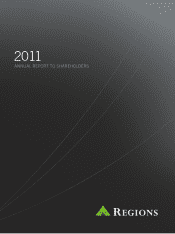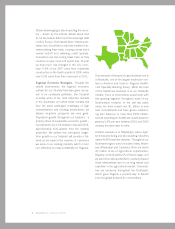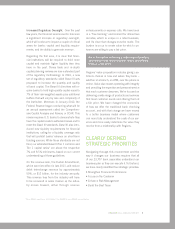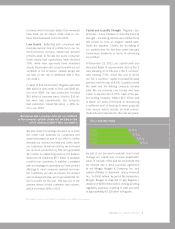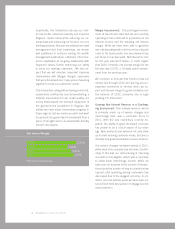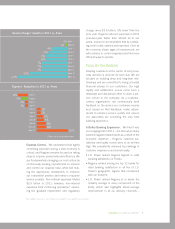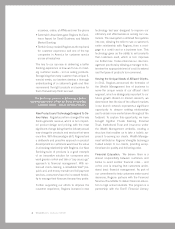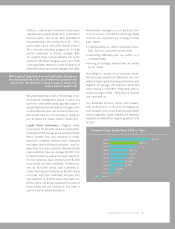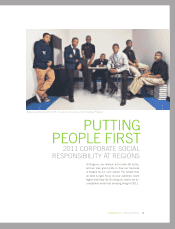Regions Bank 2011 Annual Report Download - page 5
Download and view the complete annual report
Please find page 5 of the 2011 Regions Bank annual report below. You can navigate through the pages in the report by either clicking on the pages listed below, or by using the keyword search tool below to find specific information within the annual report.
REGIONS 2011 ANNUAL REPORT 3
Increased Regulatory Oversight. Over the past
few years, the fi nancial services sector has seen
a signifi cant increase in regulatory oversight,
which will continue to impact a couple of critical
areas for banks: capital and liquidity require-
ments, and the ability to generate revenue.
Regarding the fi rst area, it is clear that fi nan-
cial institutions will be required to hold more
capital and maintain higher liquidity than they
have in the past. Stress tests and in-depth
capital planning reviews are now a standard part
of the regulatory methodology. In 2010, a new
set of regulatory standards called Basel III was
proposed to increase the quantity and quality
of bank capital. The Basel III directives will re-
quire banks to hold high-quality capital equal to
7% of their risk-weighted assets plus additional
buffers that will vary by size and complexity of
the institution. Moreover, in January 2012, the
Federal Reserve began conducting what will be
an annual assessment called the Comprehen-
sive Capital Analysis and Review, or CCAR. This
review requires U.S. banks to demonstrate they
have the capital levels to withstand losses and to
meet the Basel III standards. Basel III also intro-
duced new liquidity requirements for fi nancial
institutions, calling for a liquidity coverage ratio
that will prohibit banks’ reliance on short-term
funding sources. While these standards are not
fi nal, our estimated Basel III Tier 1 common and
Tier 1 capital ratios1 are above the respective
7% and 8.5% minimums, based on our current
understanding of these guidelines.
On the revenue side, the Durbin Amendment,
which went into effect in late 2011, will reduce
debit interchange revenue by approximately
50%, or $12 billion, for the industry annually.
This revenue loss from the industry will have
to be recovered in some manner as the indus-
try moves forward, either through revenue
enhancements or expense cuts. We have been
in a “free banking” environment for almost two
decades, which is unique in a retail business,
and it’s clear that changes must be made. The
burden is on us to create value for which cus-
tomers are willing to pay a fair price.
Regions’ value proposition includes giving cus-
tomers choices in how and where they bank –
whether at a branch, an ATM, over the phone or
online. Value also means operating with integrity
and providing the expertise and personal service
that each customer deserves. We’re focused on
delivering a wide range of products and services
that meet customer needs and offering them at
a fair price. We have changed the economics
of how we offer the traditional bank checking
account, and with that change we have moved
to a better business model where customers
can more fully understand the costs of our ser-
vices and more easily determine the value they
receive from a relationship with Regions.
CLEARLY DEFINED
STRATEGIC PRIORITIES
Navigating through this environment and the
way it changes our business requires that all
of our 23,707 bank associates understand our
business plan so they can execute it. To that end,
we have clearly identifi ed four strategic priorities:
• Strengthen Financial Performance
• Focus on the Customer
• Enhance Risk Management
• Build the Best Team
We’re focused on delivering a wide range of products
and services that meet customer needs and offering
them at a fair price.
1 Non-GAAP, see Form 10-K Table 2 for GAAP to non-GAAP reconciliation

